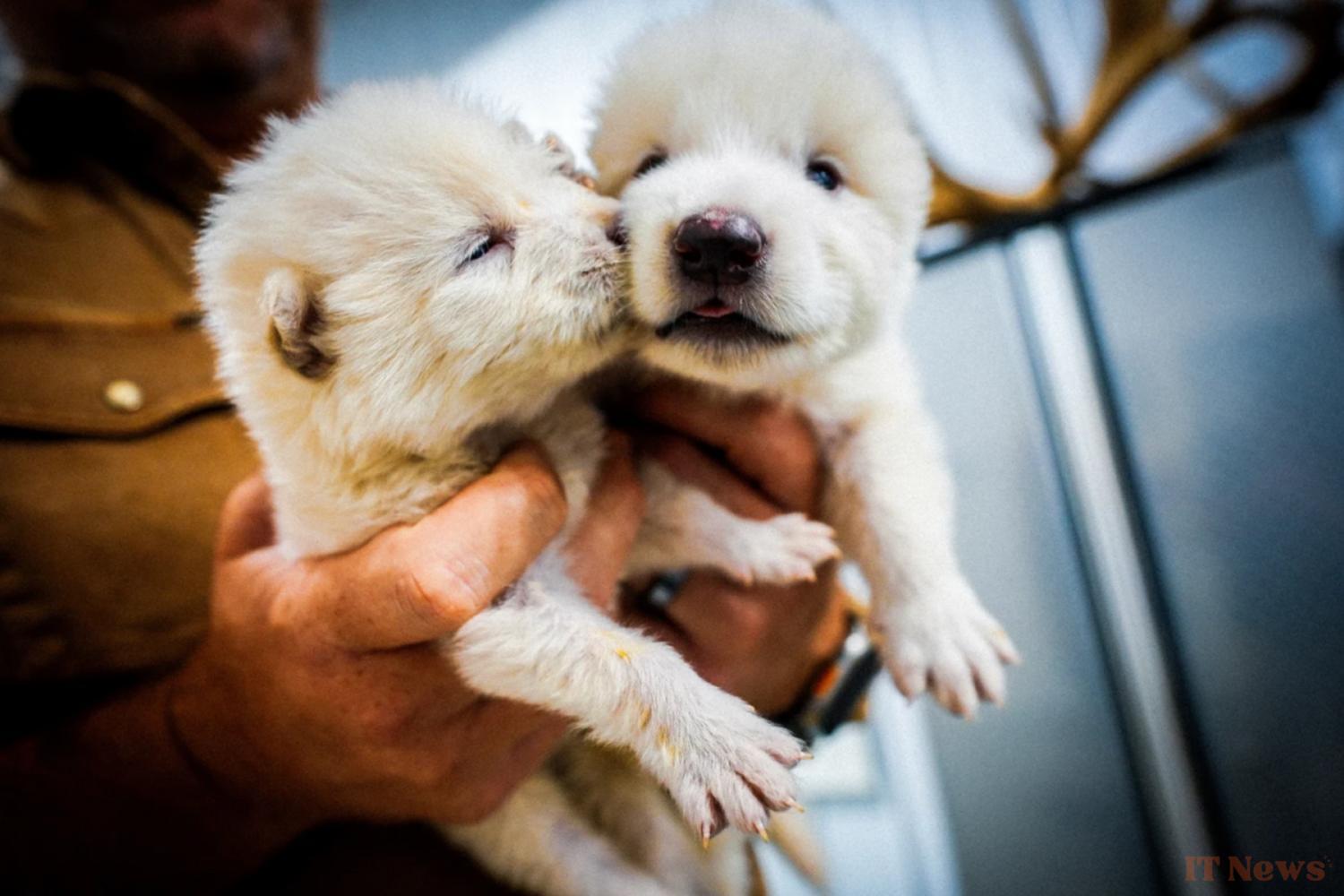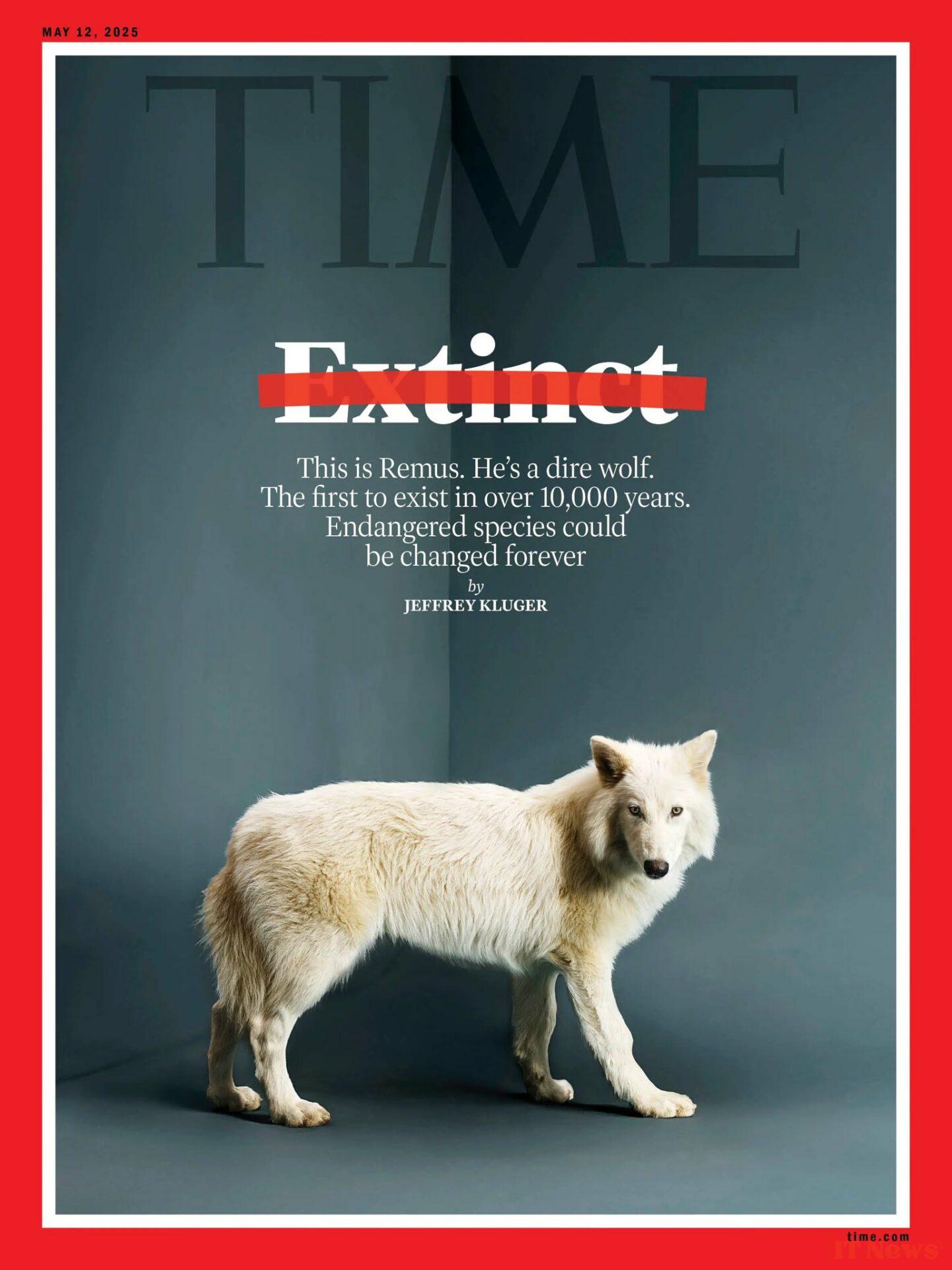For some time now, the company Colossal Biosciences has been attracting a lot of attention thanks to a project that seems straight out of science fiction: resurrecting extinct species, such as the mammoth or the Tasmanian devil, through genetic engineering. It now claims to have succeeded with a cousin of the wolf that disappeared several millennia ago—but many researchers vigorously dispute the company's claims.
This week, the company made a big splash by landing on the cover of the famous Time Magazine. In a lengthy dossier, company spokespersons claim to have achieved the world's first "de-extinction" by breeding three wolf pups belonging to the species Canis dirus, which disappeared more than 10,000 years ago. A claim supported by impressive images of majestic canids with immaculate white fur, presented as the first modern representatives of this species returned from the dead... but disputed by experts.
De-extinction mission
This news comes at a time of high activity for the company. In March, Colossal announced it had created genetically modified mice with woolly mammoth fur. To achieve this, the company extracted DNA fragments from mammoth fossils. It then analyzed the genome of Asian elephants, the mammoths' closest living relatives, to identify portions of the genome that have been lost since the latter's extinction.
From there, the company's researchers modified the genome of mouse embryos by integrating synthetic versions of the previously identified genes, resulting in a litter of "woolly mice." According to the company, the creation of these animals represented a real step forward in de-extinction of the famous pachyderm.
To resurrect the mammoth, researchers create a strange creature
Contested claims
But experts felt that on a purely scientific level, these rodents were nothing very impressive. This was far from the first time that genes had been transferred from one species to another, and the fact that some of them came from an extinct species doesn't change much on a technical level. "It's just a mouse with special genes," said Stephan Reisenberg, a genetic engineer at the renowned Max Planck Institute, quoted by the prestigious journal Nature.
These same critics are now back with similar arguments, as the procedure that led to the birth of the three wolf cubs is based on the same principles.
The company's researchers began by analyzing DNA fragments extracted from Canis dirus fossils. They then compared them with the modern gray wolf, the closest relative of this extinct species, as they had done with the mammoth and the Asian elephant. Based on this analysis, they then modified domestic dog embryos to bring them as close as possible to their ancestors.
However, according to critics, the claim that this process can lead to the de-extinction of a species is fundamentally misleading. And for good reason: the resemblance between the three wolf cubs and their ancestors is only superficial and cosmetic. Indeed, Colossal only modified about twenty genes out of a total of more than 19,000. At the genetic level, Remus, Romulus, and Khaleesi are only dog-wolf hybrids quite distant from the true Canis dirus, and this is therefore in no way the resurrection of an extinct species.
A controversial project
Beyond the technical considerations, some observers believe that this conflation is particularly regrettable because of the message it sends to the general public. This is notably the case for Nic Rawlence, a paleogenetics researcher interviewed by the BBC. "Extinction remains irreversible," he insists. "Is the message that we can now destroy the environment and that species can become extinct without consequence, since we can resurrect them?"
And this is only the tip of the iceberg. Other observers are also concerned about the ecological repercussions of this process. According to them, putting genetically modified species into circulation in this way could unbalance entire ecosystems, with potentially catastrophic consequences that we would have great difficulty anticipating.
But so far, these recurring criticisms have never discouraged Colossal, which continues to defend the merits of its approach. It will therefore be interesting to follow the progress of this work, which will undoubtedly continue to be the subject of discussion.




0 Comments